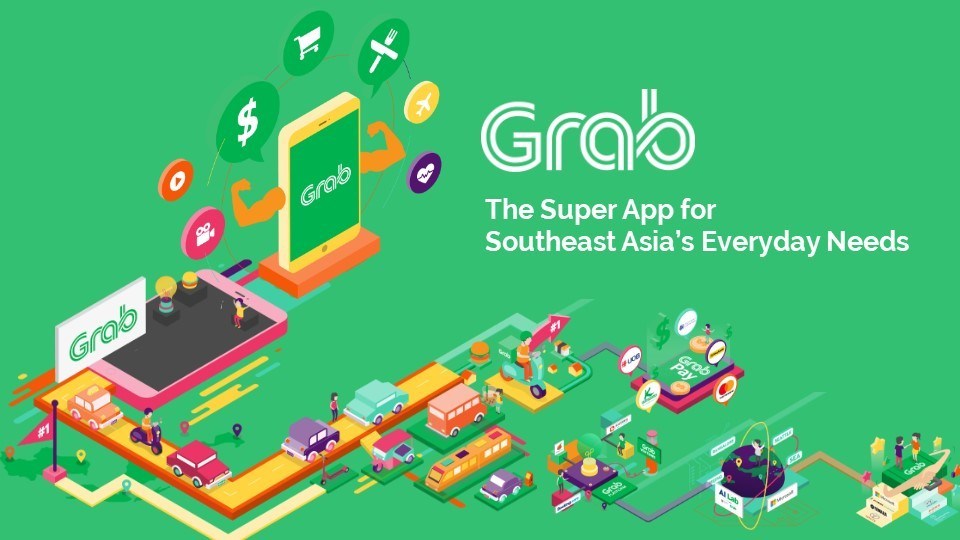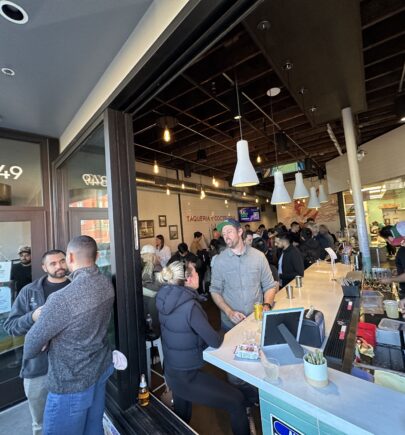Examining the Super App Strategy in Southeast Asia

This is a contributing article from Bernard Leong, founder of Analyse Asia and currently the Head of Airbus Aerial Asia for Airbus.
Join the Global Coin Research Network now and contribute your thoughts on Asia!
If you’d like to learn about crypto, join our telegram or discord channel and be kept up to date with the latest investment research, breaking news and content, Crypto community happenings around the world!
Discord https://lnkd.in/dv-2tJT
In this article, we examine the super app strategy adopted by the ride-hailing companies in Southeast Asia. In the same spirit, we want to validate the strategy that are adopted by both Grab and Gojek in comparison to US and China and explain the challenges which these companies have to overcome so that the strategy can succeed.
A major cultural and paradigm shift in the startup scene across Southeast Asia has taken shape since the US election in 2016. Prior to that, most startups aspire to be the “pick your name – US technology giant (for example, Google, Facebook, Uber, Amazon” of Southeast Asia. However, in these days, you hear startups in the region proclaiming themselves “pick your name – Chinese technology giant for example, Tencent, Alibaba, Meituan-Dianping or Bytedance”. That shift came from the perception that the Chinese technology giants have been expanding their presence in the region. The paradigm of investing in local champions was explored very rarely by US technology companies, probably with the exception of Yahoo!’s acquisition of Koprol (which was the Foursquare of Indonesia then) and Google’s acquisition of Pie in 2016. Around the late 2000s to early 2013, the Chinese technology companies have poured steroids in the form of funding into local companies along with other major players from Japan (mainly SoftBank), Korea and other countries such as South Africa (Naspers). As a result, they have extended their proxy war from China to Southeast Asia against their own Chinese counterparts but also against the US technology giants.
The success of WeChat, a messaging app built by Tencent and Alipay, a payments app created by Alibaba fostered a major innovation in mobile applications. The super app is the consequence of incrementally placing additional services into a frequently used app typically messaging or payments, and making it to be a Swiss army knife of your daily life. Analogously, it is similar to the concept where your moments of life are digitized into set of functions that can be solved for the mobile app. The first consequence which many did not appreciate, is the bypassing of the mobile operating systems owned by the duopoly of Apple’s iOS and Google’s Android. The second consequence, is the innovation of a new business model for emerging markets. What many did not realize, is that Tencent has managed to build a business out of messaging apps from the desktop to mobile era. MSN messenger and ICQ were the earlier incarnations from the West, but it is Tencent who made the sustainable business model of micro-transactions through their QQ desktop messaging app and disrupt themselves later with a mobile version called WeChat.
The best way to summarize Tencent’s core competency is that they execute their business model successfully by leveraging their competitive advantage of the massive distribution in their apps. The business model can put any form of content in the form of gaming, music and books and Tencent’s strength in distributing and monetizing made them a formidable foe against their western counterparts even with the same or greater scale. The Tencent playbook is now considered as an alternative model against the US tech giants who could never get the micro-transactions model work properly in emerging markets.
Hence in Southeast Asia, with the exception of Singapore which really looks like a city in the US, say New York or San Francisco, everywhere else is an emerging market. Does that mean the super app model pioneered by Tencent can be translated to the region? Gojek and Grab are now the flag bearers of the super app model and evolved their companies in different ways but harnessing the same strategy to achieve dominance in the region.
The purpose of this article is to examine the super app strategy in Southeast Asia, and adopt a critical lens to validate whether the strategy embraced by Grab and Gojek can or will eventually work. We are not interested to explore why they are pushing their media narrative to the market. The secondary purpose of this article is to look at how the infrastructure in Southeast Asia is compared to China and explain how success will look like for Grab and Gojek if they have executed the super app strategy successfully. In short, we want to answer, “What does success means for Gojek and Grab if they have executed the super app strategy? We are in the early days and if you ask me today, “Who will win, Gojek vs Grab?”. My answer is that I don’t know but I know how to assess the winner if one has successfully implemented the strategy and we have at least two to three years for their strategy to play out across Southeast Asia.
What is a super app?
What is a super app and what does it mean to be a successful super app? Before we set off to answer the question, it’s best to define what a super app is for the context of our conversation. The best way to define a super app is a mobile (or a new platform such as augmented & virtual reality) application that has a feature with an extremely high recurring usage and activity, and consequently, create and build an ecosystem where other mobile applications can provide products and services on the top of app layer to facilitate service based transactions. For example, WeChat is a mobile messaging app, where they build the infrastructure for other apps to build on top of their app to facilitate transactions, for example, payments for services or ecommerce transactions. Alipay is the other super app, which leverages on the high volume of payment transactions to incentivise users into usage of other services within the app itself.
If we look at Gojek and Grab which have started as ride hailing apps from the very start, their main thesis is that they both have a high recurring app usage based on ride hailing. To be fair, Gojek was the first to integrate with a local bank to facilitate payments for their food delivery and other services in Indonesia and truly embrace the super app ethos. In Indonesia, it is safe to say that Gojek is a super app in Indonesia but outside of Indonesia, it is not. They have the advantage of being a first mover but the fragmentation of Southeast Asia made it difficult for their super app expansion. I will illustrate with a simple example which I believe that it will be fixed in due time. A user in Singapore is unable to pay for the ride hailing service in Indonesia because they are not using a regional payments platform such as Cybersource (wholly owned by Visa). The inability to extend payments for their service made them vulnerable in entering other markets, but they owned the largest market in Southeast Asia which is Indonesia.
Grab, on the other hand, have been laser focused and expanded their ride hailing services across the region including Indonesia and they have shifted to the super app model by leveraging on the high recurring usage. In Grab’s model, they have also built up their financial services and payment systems to shift the grab app towards a super app model. The core assumption that a highly recurring transaction system will push the user towards other services within the app is what Grab and Gojek are betting on for the next stage of their company’s evolution.
Why the Super App works in China and not US
The best way to understand why the super app works in China and not in the US is mainly attributed to the business model and the infrastructure which the services of the super app are built on. The easiest route to understand this is via digital payments. What propelled Alibaba and Tencent towards the super app is the freedom that the financial and monetary regulatory agency in China have given them. Unlike the US, which have cultivated successful payment networks such as Visa and Mastercard, China has no payment infrastructure to start off with.
The best way to think about it is the following: Why have Visa and Mastercard not able to increase their market share in Asia and instead relying on credit card revenues for the past two decades? The technology is there and they can easily do this. The reason is that they are living on financial instructure that were developed decades back, where the transaction fee is rather high in the emerging markets but reasonable in developed markets in Asia such as Japan, Singapore and Hong Kong. The problem is that most people do not realize that when a customer is making a payment, there are many things happening in the payment infrastructure layer, for example, you need a bank to act as a clearing gateway for the transaction and at the same time, check whether the transaction is fraud.

What Alibaba and Tencent have managed to do, is to have this financial layer built but at a much cheaper cost against the US payment networks and the additional advantage is that they are built for emerging markets.

The core payments infrastructure that is built by Alibaba and Tencent can withstand a large market size such as China. If we do not factor in the regulatory tax that will be imposed by India, Indonesia and Brazil, either the Alipay and Tenpay infrastructure can be easily integrated to facilitate these payments better than the ones brought by US.
The core payment infrastructure also explains the major problem to why Facebook cannot build a WeChat clone despite we have known that Mark Zuckerberg and Dave Marcus have acknowledged Tencent’s success with WeChat and desperately want to clone it for the rest of the world. The reason is that Facebook will not be able to hit its unit economics with the payment networks of Visa and Mastercard. That is the harsh reality for low cost digital payments, where you need the scale and a cheaper and better infrastructure to facilitate the transactions. However, there is now a way forward with the launch of the upcoming stable coin for Facebook and that is to leverage on the innovations provided by blockchain technology. The blockchain technology offers Facebook a way out to circumvent the payment networks and that will provide them the infrastructure which allows them to challenge Tencent and Alibaba on payments. This will not happen now, but we are now at the turning point where Visa & Mastercard will be caught in a digital disruption in the next few years.
While a lot of technology pundits like to argue that the UI of a super app does not translate to the user in the US market, they do not realize what Facebook really need to build for their super app is a cheaper payment infrastructure subject to the laws of US financial regulatory agencies. As Facebook have revealed their plans with blockchain and introducing a stable coin for transactions, it is likely that they will tap on this infrastructure to bypass Visa and Mastercard to build out their own super app with both WhatsApp and Facebook.
Can Grab and Gojek’s super app strategy work?
Someone posed this question to me in my podcast whether Gojek or Grab will win in Southeast Asia. Let me paraphrase my answer specifically pointing the question to “How do we know when Grab and Gojek have successfully executed their super app strategy?” Here are a few metrics to how I will know whether Gojek or Grab will be successful.


To be a successful super app as we have seen in the WeChat case, we need the following:
- Can third party apps thrive on the Grab or Gojek ecosystem? First of all, the WeChat app ecosystem in China have enabled at least ten to twenty unicorns which have been built on top of their ecosystem. For example, Pinduoduo relied on WeChat for their customer acquisition and deployed on Wechat’s mini-program and has managed to go public within 3 years since its formation. It is impossible for any media outlet or product/service to acquire customers in a rapid short time without leveraging on Wechat’s ecosystem in China. Similarly, the same can be said of Alipay by Alibaba. In addition, Tencent has a robust developer ecosystem where they have successfully implemented the Wechat mini programs (which is similar to the instant app concept from Google Android) to drive the flywheel of getting developers to create and develop new applications for users.
- Do they have their own independent payments system that they have access as compared to Facebook, Tencent and Alibaba? Due to the fragmented nature of how digital payments are regulated across Southeast Asia, Gojek and Grab will be forced to work out partnerships with local payment systems or be forced into at least one or both partnerships with Visa and Mastercard with a lower but premium rate. This simply means that they have no control on their payment infrastructure. This can go two ways: one, the eventual fate is that Grab and Gojek have no control over their destiny as compared to the US and China tech giants and two, they have to develop an underlying financial infrastructure that is outside of the regulatory boundaries, and in that case, I will hazard a guess that they will have to develop a blockchain payment tech in the process. Well, Gojek is ahead of Grab by the acquisition of Coins PH which is a blockchain technology company in Philippines.
- What is the jobs to be done for the user of Grab and Gojek app? If you ask me this question at the start of Grab and Gojek’s startup stage, I will say that it’s the convenience to bring me from point A to B with a cheaper cost against the incumbents i.e. the taxi companies. Then ask the next question, what is the jobs to be done for the super app? In my opinion, the customer gets the ability and convenience to get their daily and recurring transactions done with the different services that intersect with his or her life quickly and efficiently. For example, a customer might use the ride hailing app for 4 to 5 times daily, and then need to book the barber once a month and occasionally need to buy movie tickets probably once per week. If the payment system is integrated, the customer can do it easily via the super app. Let me apply the principle of charity here, I can accept Grab’s argument that the super app idea will work in Indonesia, Philippines and Thailand but for Singapore, I very much doubt so. It has nothing to do with Grab but two factors such as accessibility to payment systems and integration with local services come to mind.
Based on the metrics on the above three factors, I can determine clearly who will be the winner. Actually, given how investors or business people think based on my interactions with them, I am inclined to think that Indonesia will be the most important market because the story of “after China, India and Brazil, which is the next big market” is the easiest to sell. China has shown that any foreign player will be given a high degree of difficulty in market entry. India has shown that any foreign player will be given a low degree of difficulty in market entry but they are also learning from the Chinese, Korean and Japanese in how to protect their own market. Every smart person who I spoke to in Indonesia told me that the nationalist problem does not exist there, but I am sceptical of that.
So, to end, I do hope that either Gojek or Grab will succeed or one of them must succeed. It is in the interests of the Southeast Asia region to show that it operates as one single market and at the same time, demonstrates that investors can see returns on their investments.
Author’s note and acknowledgments: I thank Jon Russell, Michael Smith, Tim Culpan and many others who I have discussed this either thru the podcast or twitter. In addition, BL thanks James Hull and Carol Yin for reading the first drafts and added their feedback to improve the article. I will be adding a reference section and updating constantly on the links to reflect the discussion on this topic which has been going on.
Additional points for further discussion:
- Michael Norris have pointed out that one major factor for Wechat super app success is attributed to the strategic partnerships that they have spent years to build out within China. The same is for Alipay by Alibaba Group under Ant Financial. I might expand on this aspect in the context of Southeast Asia in a future article.
- James Hull, host of China Tech Investor podcast, released a thoughtful tweetstorm on the post, and you can read his comments from this link here. He has pointed out that merchant acquisition strategy by Tencent is one of key success factors for Tencent to make Wechat into a super app.
- There is an ongoing discussion in Analyse Asia’s Telegram Groupwhere different people have offered up different perspectives on the super app. One strand of argument is to explore the strategy from the consumer or in a more technical language, user point of view. I agree with that assessment but we need more data on the user’s usage patterns from Gojek and Grab super app.
References:
[1] Analyse Asia podcast interview with Jon Russell Episode 297 and you can hear it direct via Overcast, Spotify and Himalaya
[2] Tim Culpan, “Grab’s bonfire of the vanities is blowing smoke“, Bloomberg
[3] Michael Smith from SeedPlus, “(My take) Grab vs. Go-Jek: Inside Asia’s Battle of the ‘Super Apps‘.” Smithy has pointed a couple of issues with Grab’s app, and I believe that they should act on his feedback.
[4] Jon Russell from TechCrunch, “No, Gojek isn’t valued at 10 billion … yet“.
[5] Connie Chan from Andreessen Horowitz, “When One App Rules Them All: The Case for Wechat & Mobile in China”
This article was originally published in June 10, 2019.












